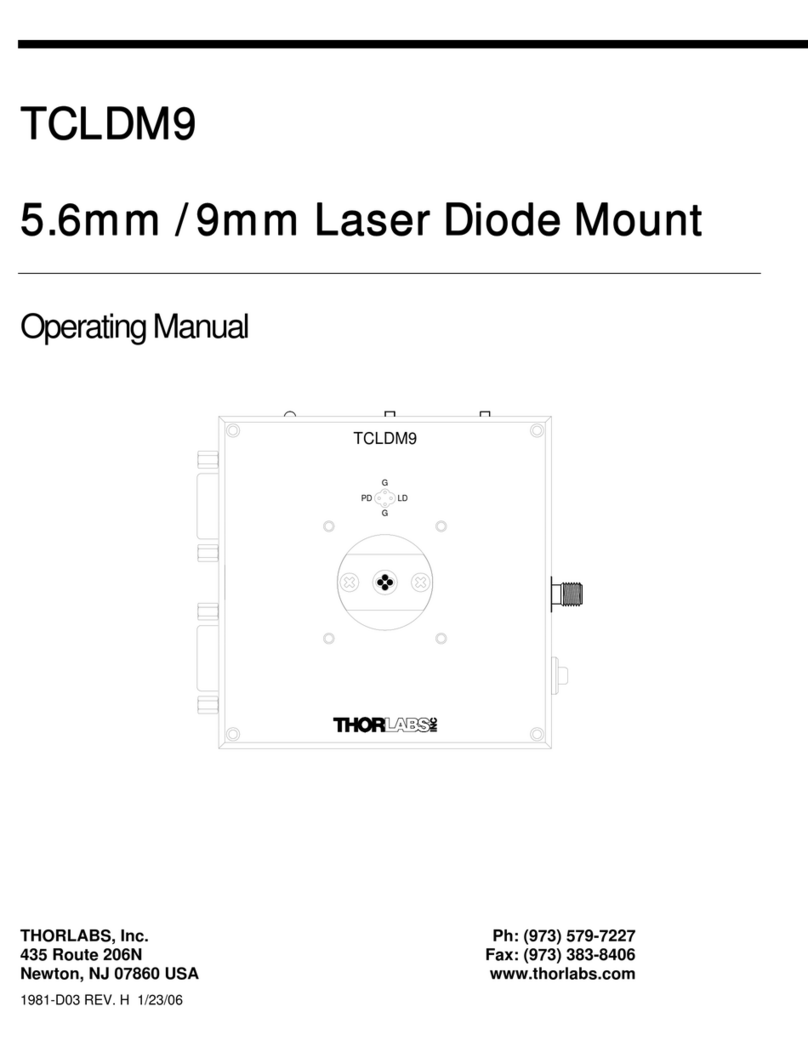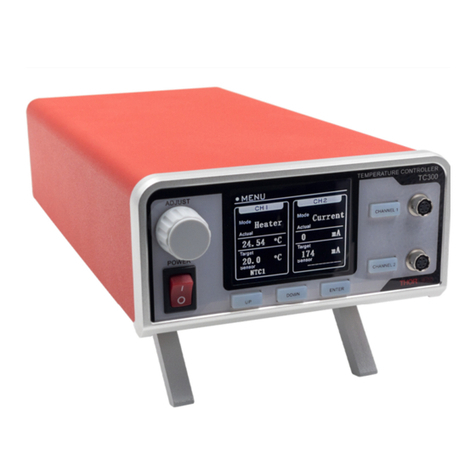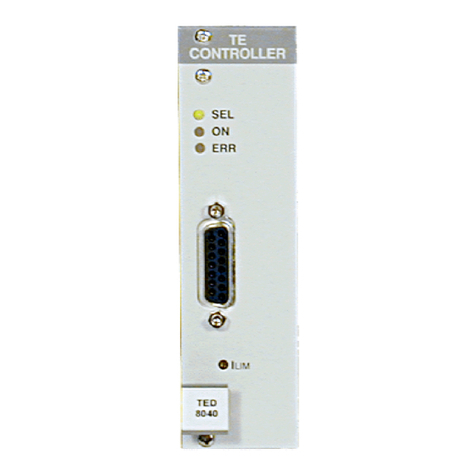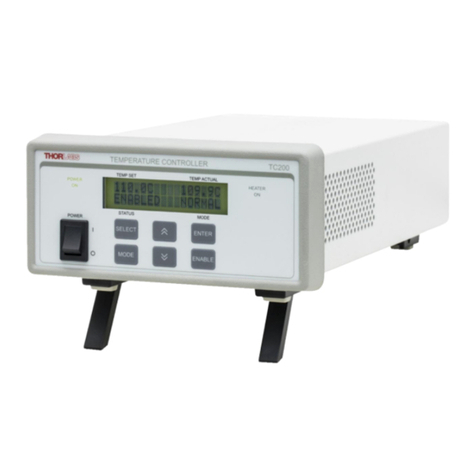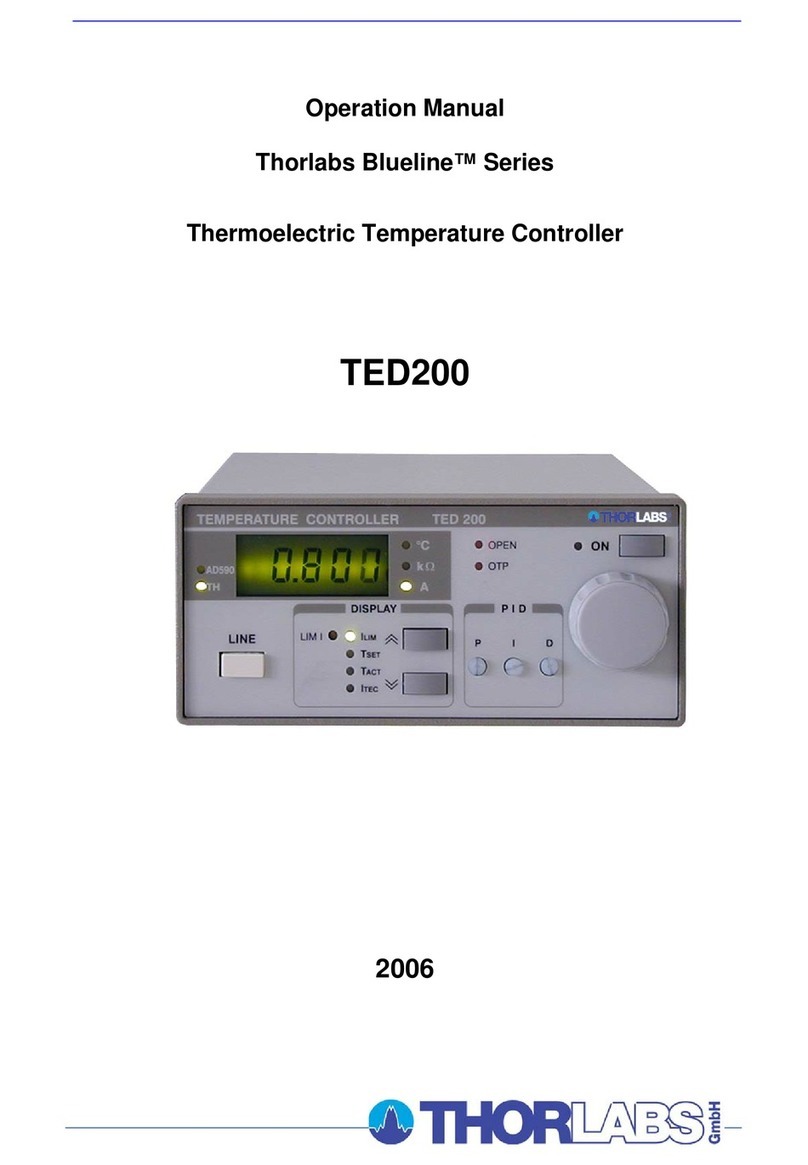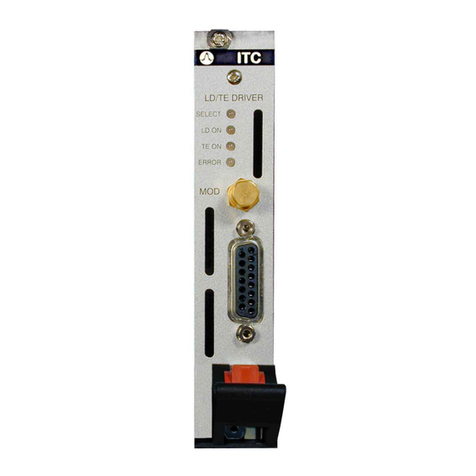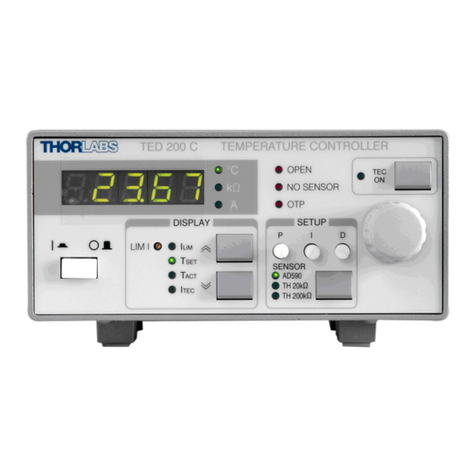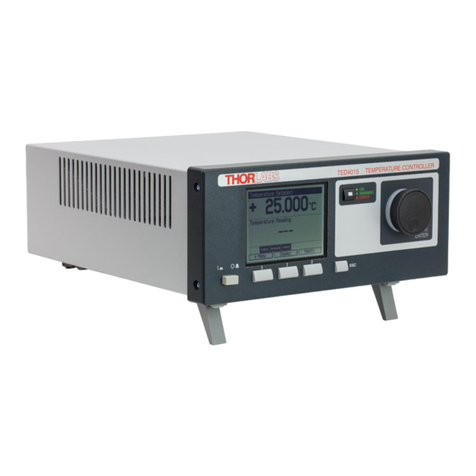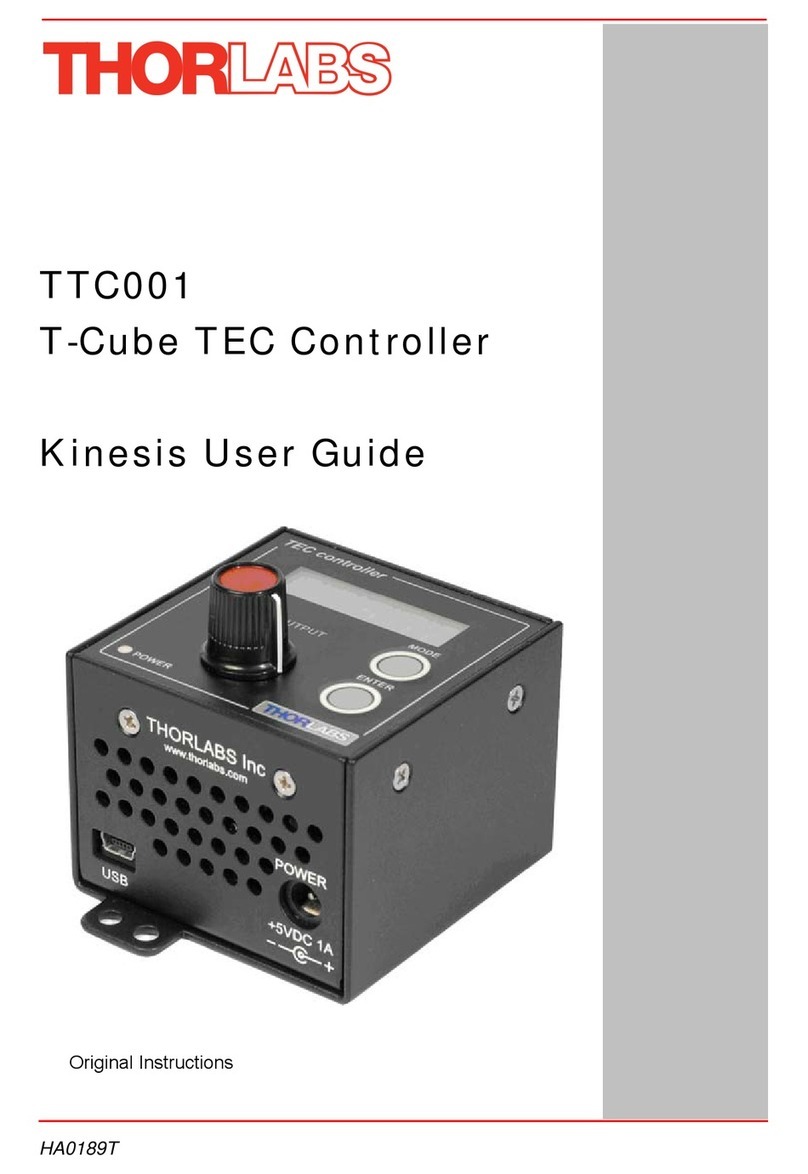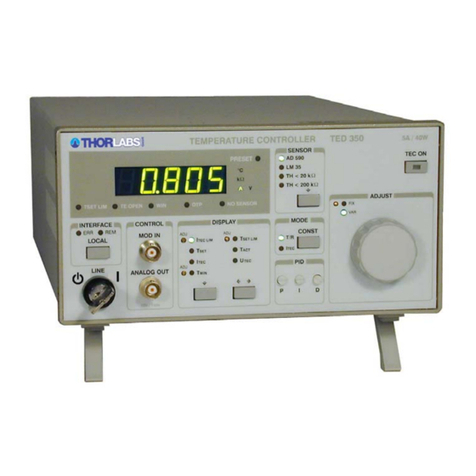
© 2016 Thorlabs GmbH
10
MTD415T
MTD415T Data Sheet Rev. 1.0
Functional Description
The MTD415T is a miniature, closed-loop temperature controller module. It is compatible with a
10 k
W
NTC (thermistor) temperature sensor and it's output is designed for control of
thermoelectric coolers (TEC).
The MTD415T delivers a TEC current up to 1500 mA at 4.0 V compliance voltage.
Power Supply
The supply voltage ranges from 4.5 V to 5,5 V. From the supply voltage, the internal supply
voltage for the microcontroller is derived. Further, a reference voltage for the temperature
sensor is generated (VREF; 1.8 V).
TEC Current Control
The TEC element is connected between TEC+ and TEC-. A correct connection is essential to
avoid wrong temperature correction.
The MTD415T allows to limit the maximum TEC current. Lowering the TEC current limit might
be helpful for control loop optimization in case of low thermal loads and lowers the dissipated
by the MTD415T power.
Micro-controller
The functions of the microcontroller are:
·
Comparison of the actual temperature with the set temperature;
·
Generation of the control signal for TEC output stage with respect to the comparator
signal;
·
PID loop control for optimization of the temperature settling time and for minimizing the
final temperature error.
All parameters (TEC current limit, set temperature, temperature window, PID share settings
etc.) are programmed via the UART user interface. Detailed information about how to program
the MTD415T can be found in the section Programmers Reference on page .
Note
The UART interface uses 3.3 V logic level. Connect the UART to a PC only using an
appropriate converter, e.g., a commercially available UART-to-USB cable.
The Status signal informs about correct operation.
The temperature control is activated by setting the Enable pin to low.
12
